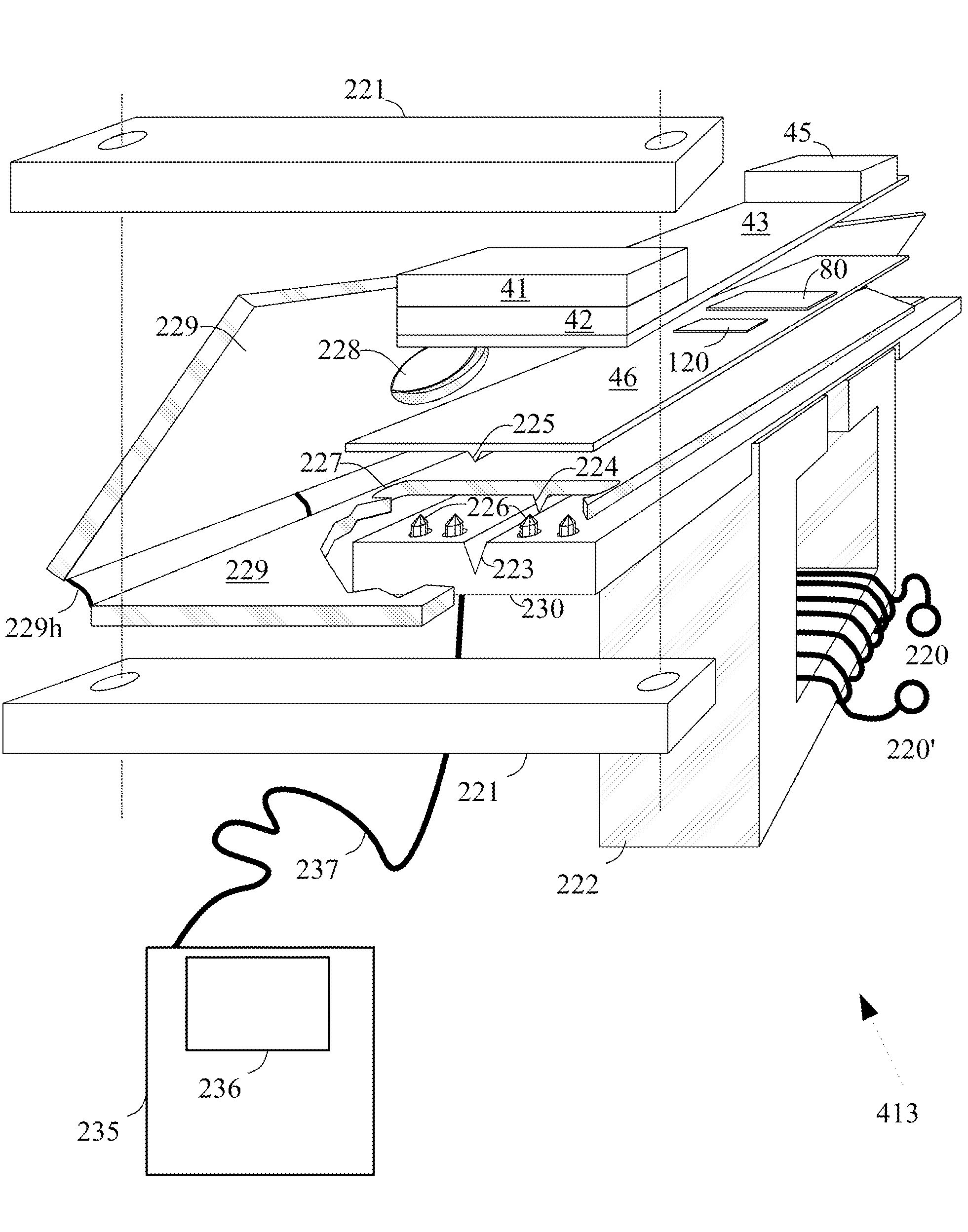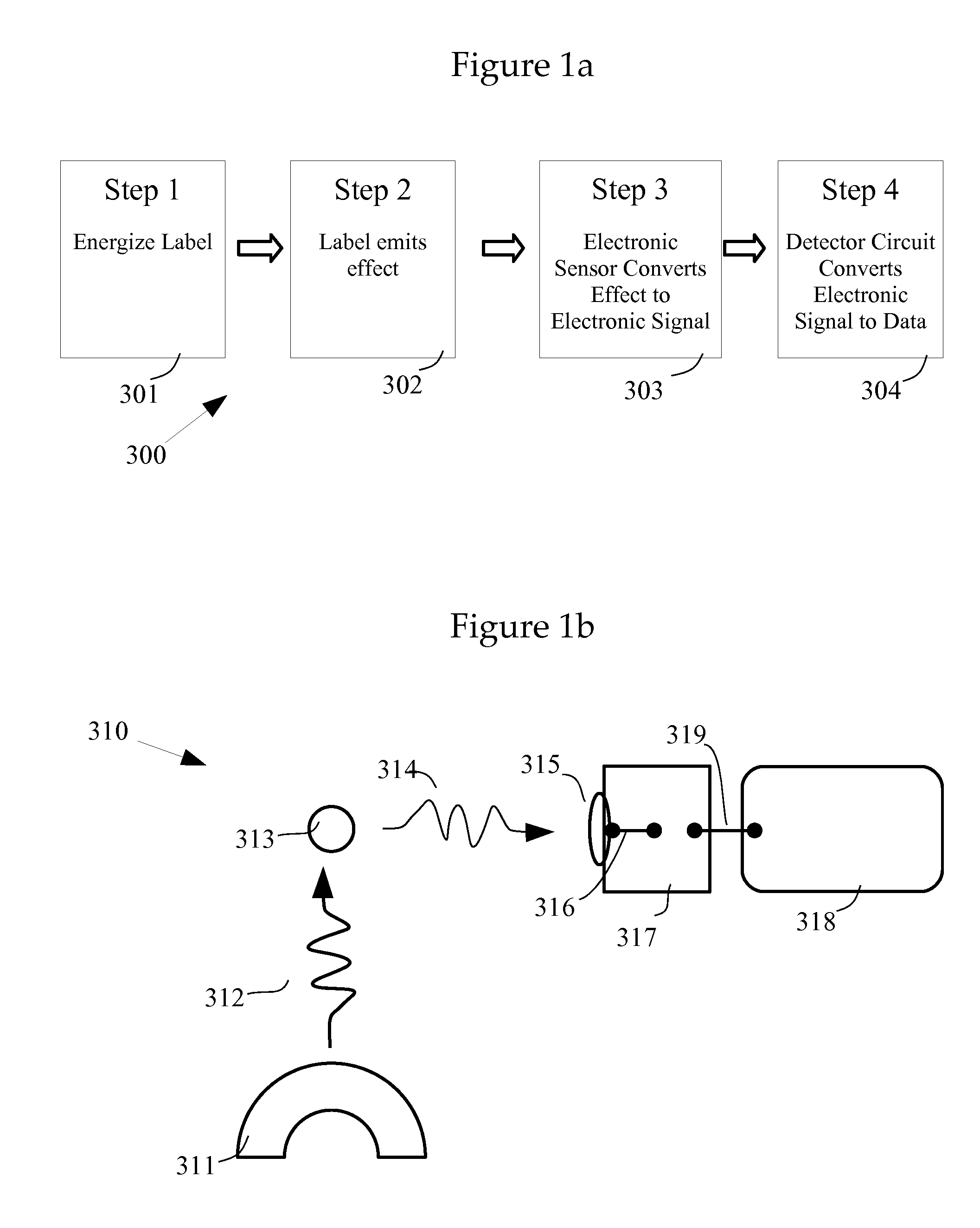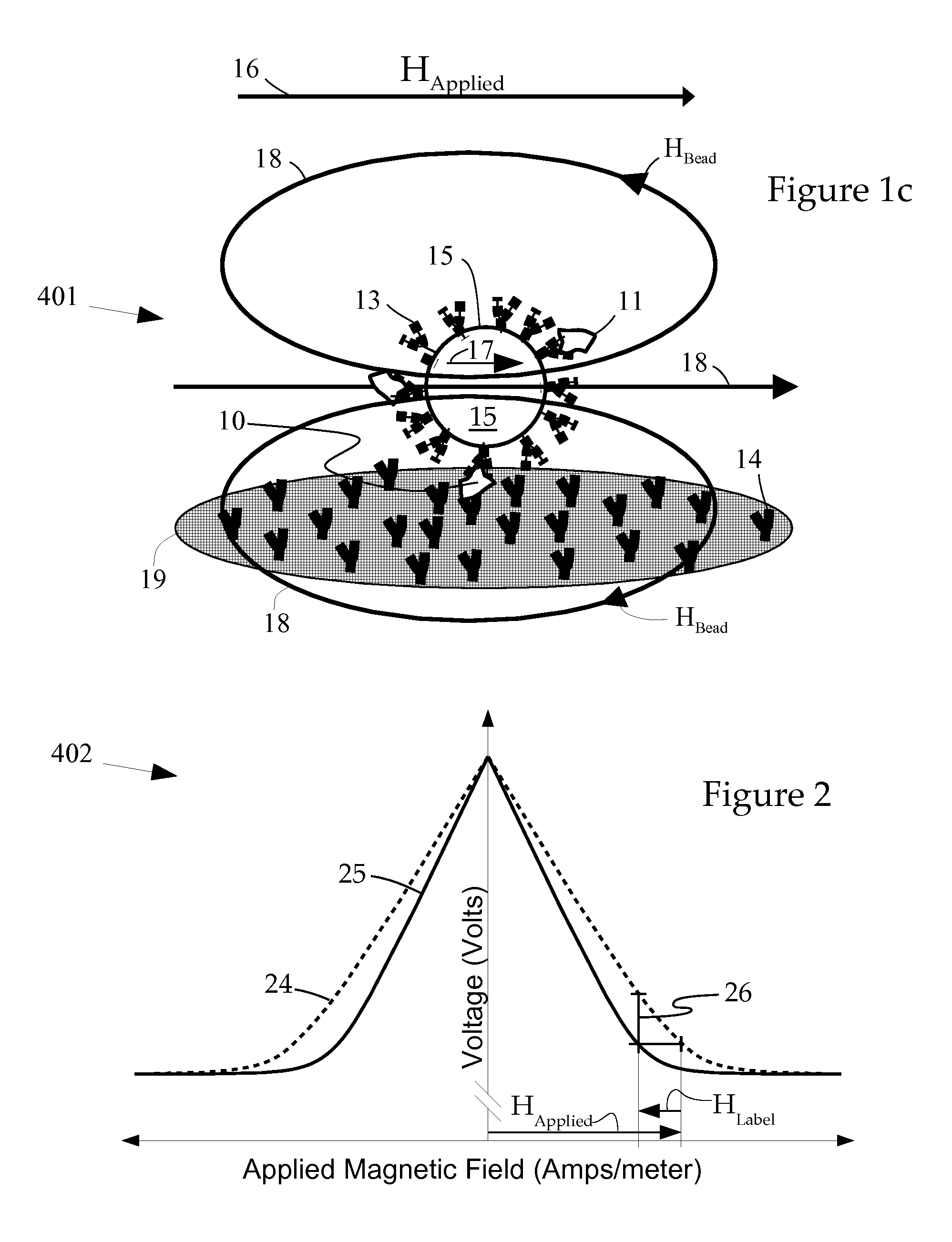Integrated Membrane Sensor
a technology of electromagnetic effect field and membrane sensor, which is applied in the measurement of magnetic beads labelled molecules, magnetic property measurements, instruments, etc., can solve the problems of slowed commercialization, no disposable multiplexed assays on the market, and no examples of integrating electromagnetic effect field microchips into membrane-based assay devices
- Summary
- Abstract
- Description
- Claims
- Application Information
AI Technical Summary
Benefits of technology
Problems solved by technology
Method used
Image
Examples
Embodiment Construction
[0071]The purpose of the invention is to measure the quantity of bioanalyical material (analyte) in a given sample. An immunoassay is a common form of bioassay where the analyte is captured by antibodies. FIG. 1 shows an analyte molecule 10“sandwiched” between: one of the many capture antibodies, 14, on the sensor surface 19; and one of many “probe” antibodies, 13, on a paramagnetic label 15. Label 15 also has other antibodies, 11, captured on it, but not sandwiched. An applied magnetic field (HApplied), whose orientation is indicated by vector arrow 16, induces a linear increase in the magnitude of magnetization, M, in label 15. The orientation of M is indicated by vector arrow 17, it is always parallel to HApplied.
[0072]A Giant Magnetoresistive (GMR) detector 19 measures the total magnetic field along its axis of sensitivity which is the sum of HApplied and Hlabel, whose orientation in the region around the label is represented roughly by oval curves 18.
[0073]A commonly used form ...
PUM
 Login to View More
Login to View More Abstract
Description
Claims
Application Information
 Login to View More
Login to View More - R&D
- Intellectual Property
- Life Sciences
- Materials
- Tech Scout
- Unparalleled Data Quality
- Higher Quality Content
- 60% Fewer Hallucinations
Browse by: Latest US Patents, China's latest patents, Technical Efficacy Thesaurus, Application Domain, Technology Topic, Popular Technical Reports.
© 2025 PatSnap. All rights reserved.Legal|Privacy policy|Modern Slavery Act Transparency Statement|Sitemap|About US| Contact US: help@patsnap.com



